Are Samoyeds Hypoallergenic Dogs? What You Need To Know
Many people love dogs but hesitate to adopt one because they have allergies to dogs or have friends or family who are allergic. That makes it natural to ask, “Are Samoyeds hypoallergenic?” when considering the possibility of adopting one.
Luckily, the answer to the question of whether or not Samoyeds are hypoallergenic is yes. Here’s everything you need to know about these Siberian dogs.
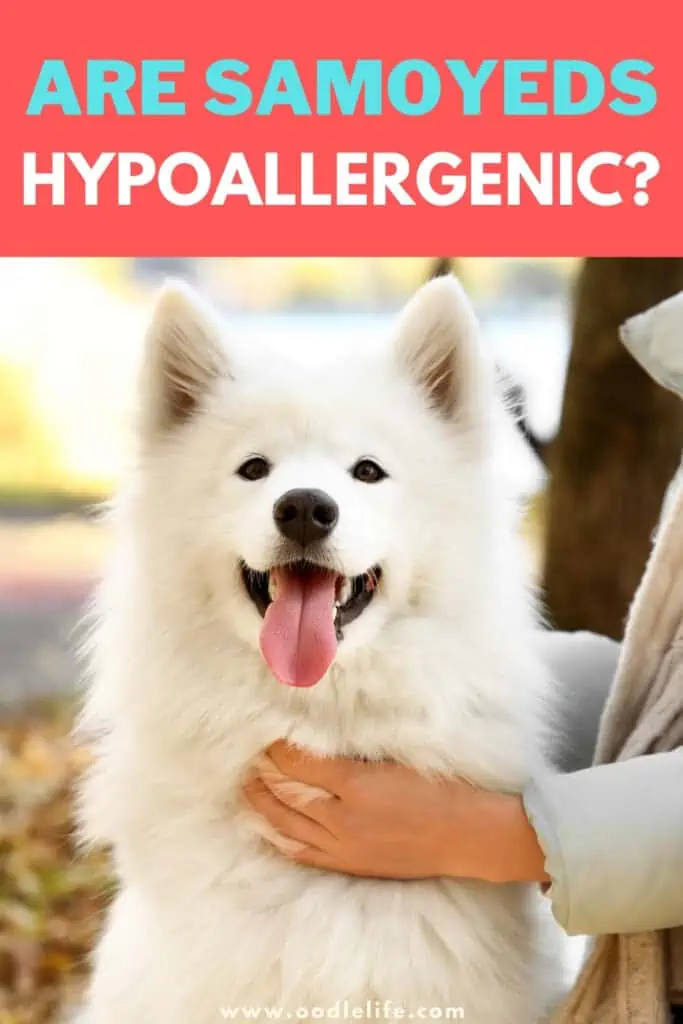
What Are Hypoallergenic Dogs?
Let’s start by discussing what it means for a dog to be hypoallergenic. The word has a long history and often gets misconstrued as meaning that people with allergies to dogs won’t react to hypoallergenic canines.
However, one would be more accurate to say that hypoallergenic dogs are less likely to cause an allergic reaction than dogs that aren’t hypoallergenic.
In this context, it can seem odd to describe Samoyeds as hypoallergenic because they’re notorious for their beautiful, white fluffy coats. It’s natural to infer that dogs with less hair are hypoallergenic.
But a lack of hair doesn’t lead to a lack of reactions. Hypoallergenic dogs aren’t always canines with less hair than average. Instead, they are dogs with lower dander levels. These are the flakes of dead skin that fall off your dog during a bath or when they sit on the sofa.
Typically, the higher the dander level, the more severe the allergy. Since dander gets carried from the dog to the atmosphere via the hair they shed, people mistakenly attribute their allergies to dog hair. And while it’s true that dog fur can exacerbate allergies, it’s seldom the direct cause.
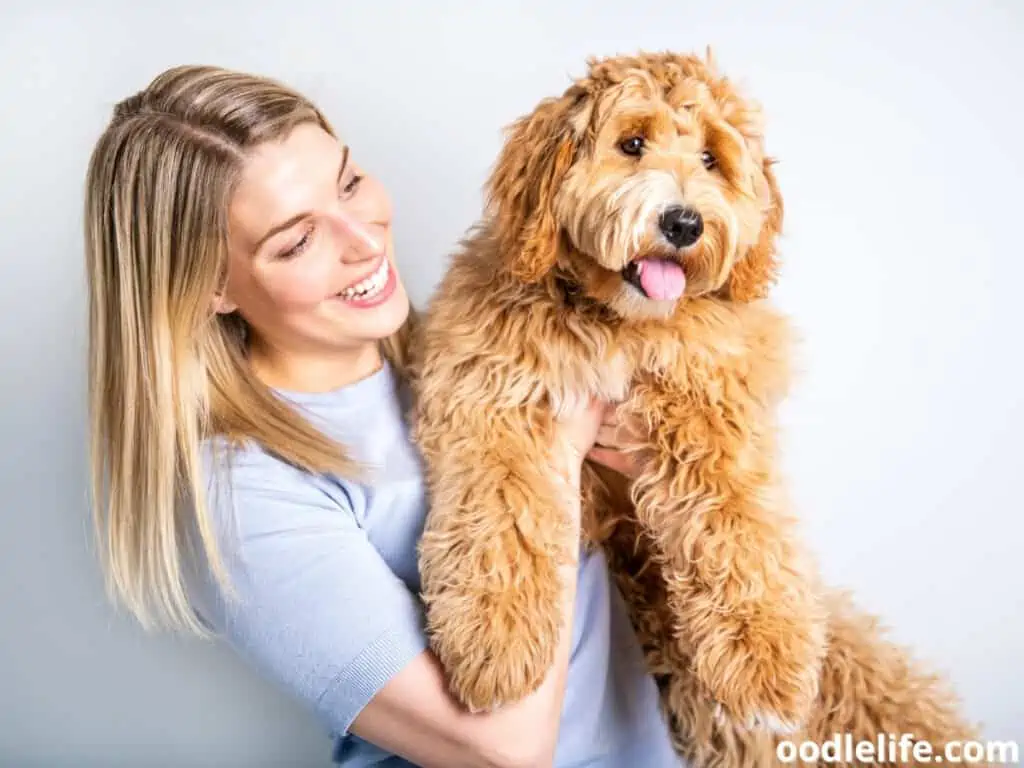
What to Do before Adopting a Hypoallergenic Dog?
Since Samoyeds are hypoallergenic, prospective owners might think they can adopt one without triggering their or anyone else’s allergies.
On paper that makes sense. In practice, it’s not a good idea. As discussed, hypoallergenic dogs aren’t a guaranteed cure for dog allergies. If you’re thinking about adopting a hypoallergenic dog, you should always spend time with them first.
Some breeders may even offer to send a sample of fur so that you can see whether the dander in it triggers an allergic reaction.
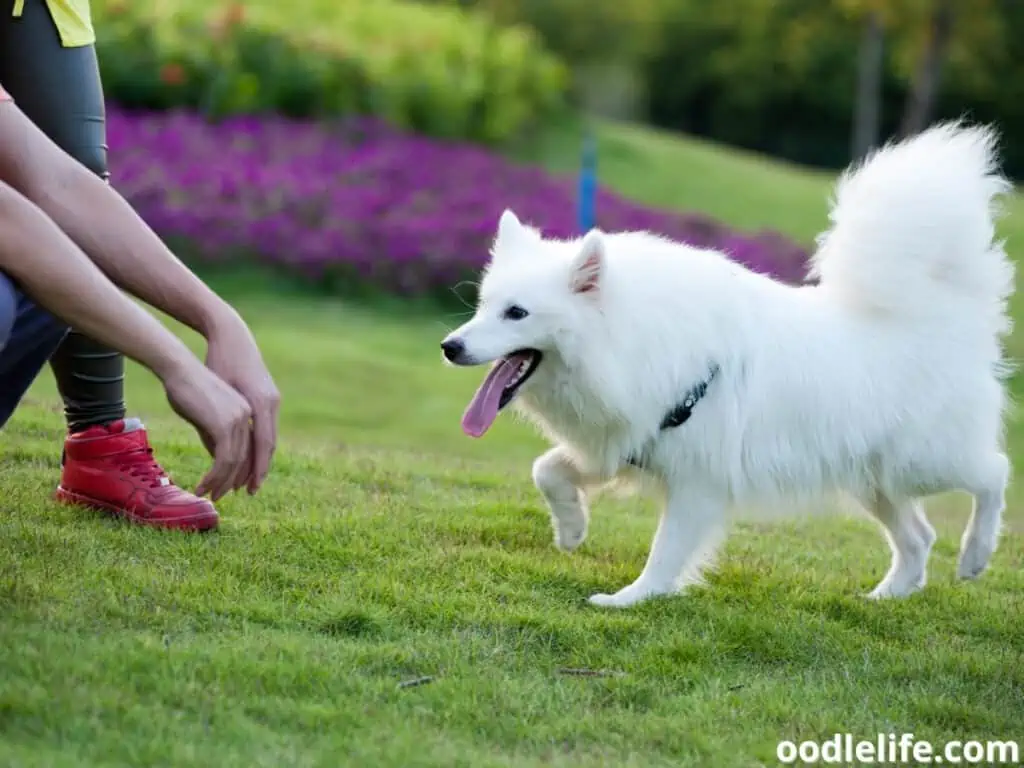
How Hypoallergenic Are Samoyeds?
There are many hypoallergenic dog breeds to choose from. These include:
And, of course, the Samoyed. When looking for the right hypoallergenic dog for your family, you must understand that not all dog breeds are equally hypoallergenic.
Likewise, a hypoallergenic Samoyed that triggers no reaction in one person may cause an allergic reaction in someone else.
That’s because, on the sliding spectrum of hypoallergenic dogs, Samoyeds are less hypoallergenic than other breeds. Even so, it’s common for people with allergies to find they react mildly to Samoyeds, especially after periods of prolonged exposure.
So, you must take the time to visit with your potential Samoyed before adoption. If you suffer from allergies, the last thing you or your dog needs is for you to take them home only for you to start sneezing several days into the relationship.
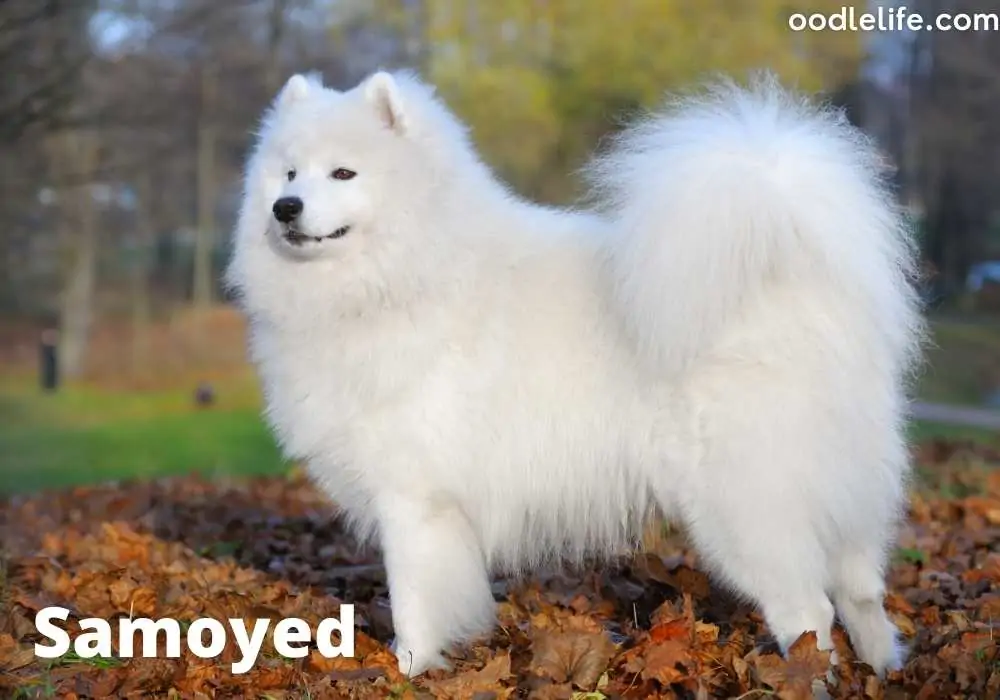
Do Samoyeds Shed Much?
Another common question, in addition to wondering ‘Are Samoyeds hypoallergenic?’ is whether or not these dogs shed.
You’ll realize that shedding isn’t necessarily responsible for allergies. However, it’s a natural question since dog hair is one of the primary conveyors of dog dander, which does trigger allergies, around your house.
Some dogs shed seasonally. Typically they lose hair in spring and fall when the canines change their coat density to ensure their comfort as temperatures increase or decrease.
When shedding happens, Samoyeds get rid of their second coat. The significant hair loss causes an immediate and rapid build-up of dog hair in your home. For many dog-sensitive people, it can cause an allergic reaction even though Samoyeds are hypoallergenic, simply because so much hair accrues quickly.
Moreover, despite being hypoallergenic, Samoyeds don’t only shed seasonally. They also shed regularly throughout the year. This frequent shedding is one of the reasons some people contest the hypoallergenic nature of Samoyeds.
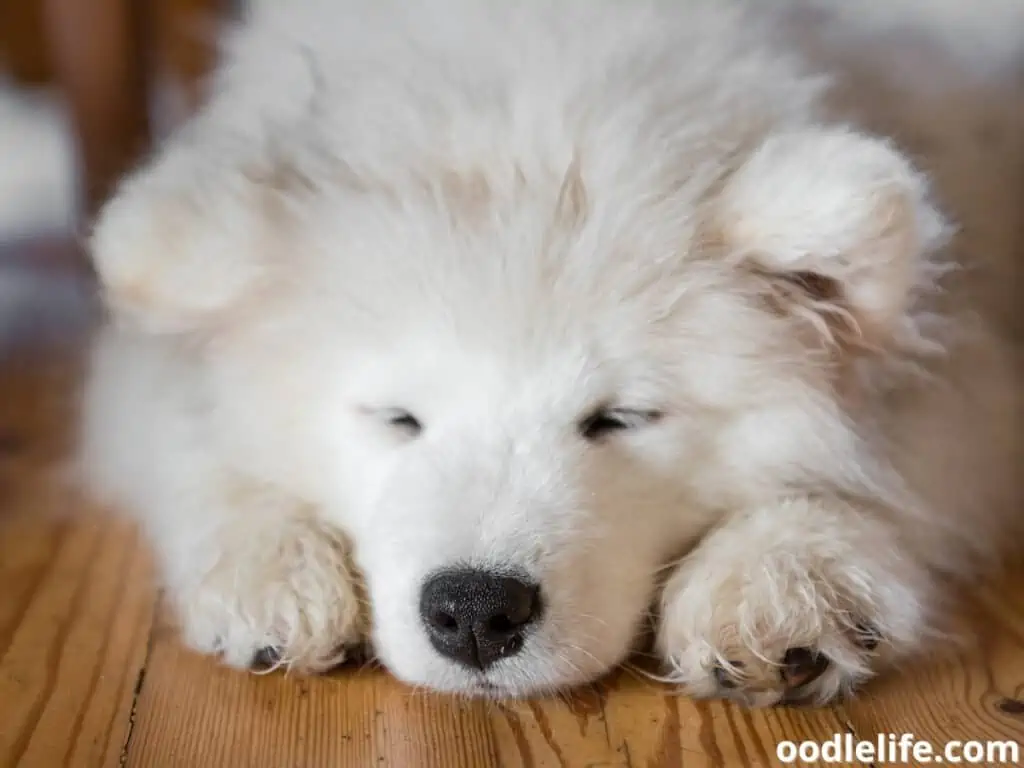
How to Manage Your Allergies Around Samoyeds?
Another thing to consider if you want to adopt a Samoyed puppy is that there are ways of mitigating the allergies they might provoke.
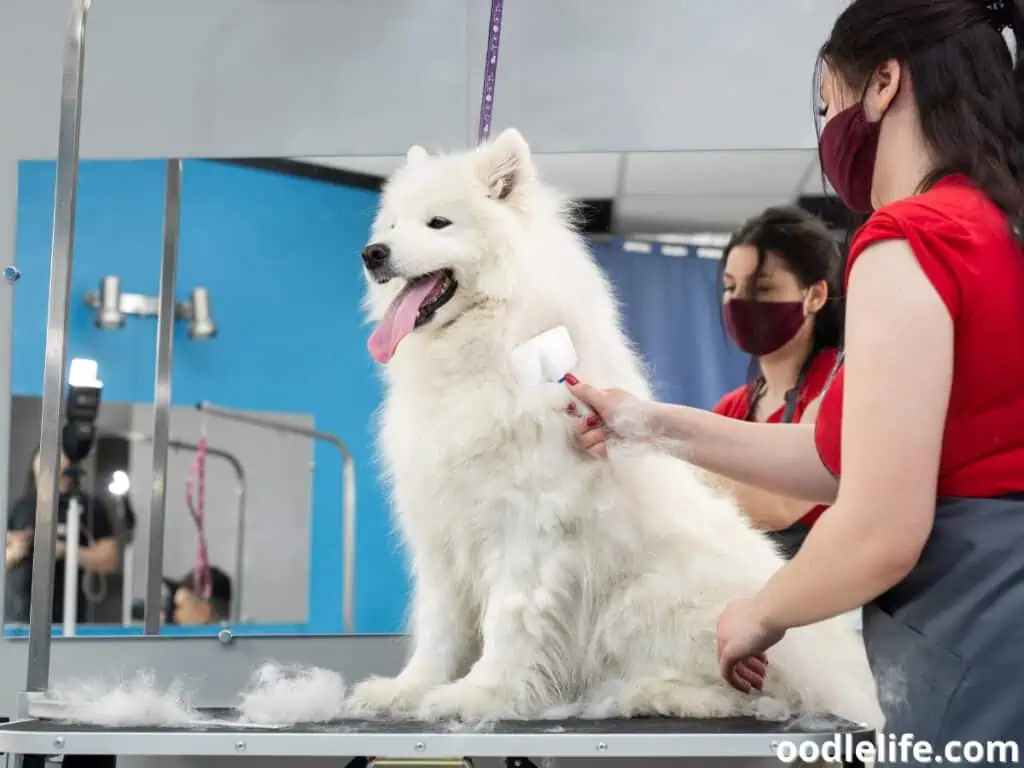
Routine Brushing
One of the best ways to manage allergies is by regular brushing because it helps remove excess fur and dander from your Samoyed’s coats. Ideally, someone without allergies should do the brushing, but if you find it an effective way of bonding with your new dog, there’s nothing to stop you from doing it, either.
Wash Your Samoyed Regularly
Washing is about more than keeping your Samoyed’s coat white, though that’s a bonus. Bathing, especially when your Samoyed is shedding most of their undercoat, will help remove debris like loose fur and dead skin.
Routine bathing in spring and fall also helps prevent your Samoyed shedding around the house and reduces the chances of exposing you to their dander.
Keep Them out of the Bedroom
Cuddling up to a dog for an evening can be lovely. But the appeal wears off of their presence and stops you from sleeping.
If you or a family member has an allergy to dogs, then one of the best things you can do to manage the symptoms is to keep the dog out of the bedroom. That mitigates problems like:
- Stuffy nose
- Watery eyes
That way, even if your Samoyed does shed, you can keep it to areas of the house that won’t affect you as strongly.
Another way to manage Samoyed shedding is through the use of a HEPA filter to keep the air dander-free.
Use Lint Rollers
Finally, to help manage shedding and ensure the Samoyed you bring home is as hypoallergenic as possible, never underestimate the utility of a lint roller. These are an excellent way to remove excess fur from clothes, chairs, and beds.
Another thing we find lint rollers are good for is grooming a dog that’s averse to brushing. Gently moving the roller over a dog’s coat won’t catch all the loose fur from their undercoat, but it drastically reduces shedding.
Other Samoyed Considerations
What else do you need to know about Samoyeds before adopting one?
They’re medium-sized dogs and stand approximately 19-23 inches tall. They weigh between 35 to 65 pounds, so while you may struggle to pick one up and carry it, they aren’t giant dogs, either.
They’re distinctive for their white coat and triangular eyes, which give Samoyeds an intelligent look. That said, owners can have difficulty training them. However, they are devoted to their families and have incredible patience with children, so respond effectively to positive reinforcement.
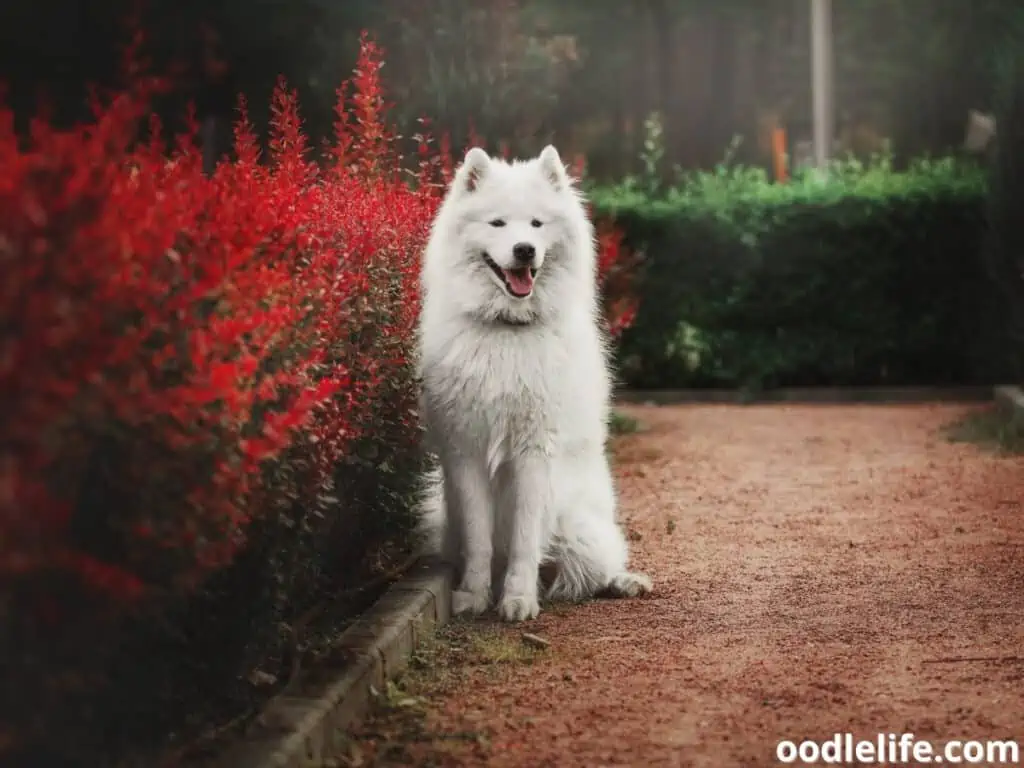
Conclusion
Are Samoyeds hypoallergenic? Yes. While they do shed more than other breeds, they also have less dander than other dogs, meaning they are less likely to provoke allergy symptoms from you or your family.
That, combined with their cheerful disposition and calm manner makes them an excellent family dog. However, ensure you take appropriate measures before adopting a Samoyed. Find out how likely they are to inspire allergies before bringing them home.
If you do adopt a Samoyed, remember there are things you can do to keep their low dander levels lower still, ensuring everyone is as happy, healthy and allergy-free as possible. And finally — don’t forget to enjoy your Samoyed’s company.